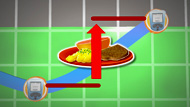Diabetes: Checking Your Feet
Topic Overview
When you have diabetes, you need to examine your feet every day. Look at all areas of your feet, including your toes. Use a handheld mirror or a magnifying mirror attached to the bathroom wall near the baseboard to inspect your feet. If you can't see well, have someone else use this checklist to examine your feet for you.
Using this checklist helps you remember to examine all areas of your feet.
|
Check your feet for: |
What to do if you notice a problem |
|---|---|
|
Skin color:
|
|
|
Patches where hair is missing |
Bald patches may mean irritation from shoes or a blood flow problem. Show the areas to your doctor during your next visit. |
|
Blister |
|
|
Break in your skin |
Note: Examine the underside of your toes and the area between the toes for breaks in the skin. |
|
Calluses (hardened areas of skin) and corns (pressure injuries, usually found on or between toes) |
Show the area to your doctor at your next visit. This is very important.
|
|
Peeling skin or tiny blisters between your toes or cracking and oozing of the skin |
This may be athlete's foot. Treating athlete's foot early can prevent serious foot infections. See the topic Athlete's Foot for more information.
|
|
Moisture between your toes |
Dry between your toes well. Moisture between your toes provides a good place for bacteria and fungi to grow, causing infection. |
|
Feelings of numbness, burning, or "pins and needles" |
If you have new numbness or tingling in your feet that does not go away after changing position, call your doctor. |
|
Sore (ulcer) |
Do not try to treat a foot ulcer at home. Call your doctor immediately. If you check your feet regularly, you usually will see a problem before it becomes an ulcer. |
|
Ingrown toenail |
Do not treat an ingrown toenail at home. Call your doctor for an appointment. |
Health Tools
Health Tools help you make wise health decisions or take action to improve your health.
Related Information
Credits
ByHealthwise Staff
Primary Medical Reviewer E. Gregory Thompson, MD - Internal Medicine
Adam Husney, MD - Family Medicine
Kathleen Romito, MD - Family Medicine
Specialist Medical Reviewer David C. W. Lau, MD, PhD, FRCPC - Endocrinology
Current as ofDecember 7, 2017
- Top of Page
Next Section:
Health Tools
Previous Section:
Topic Overview- Top of Page
Next Section:
Related Information
Previous Section:
Health Tools- Top of Page
Next Section:
Credits
Previous Section:
Related Information- Top of Page
Current as of: December 7, 2017




